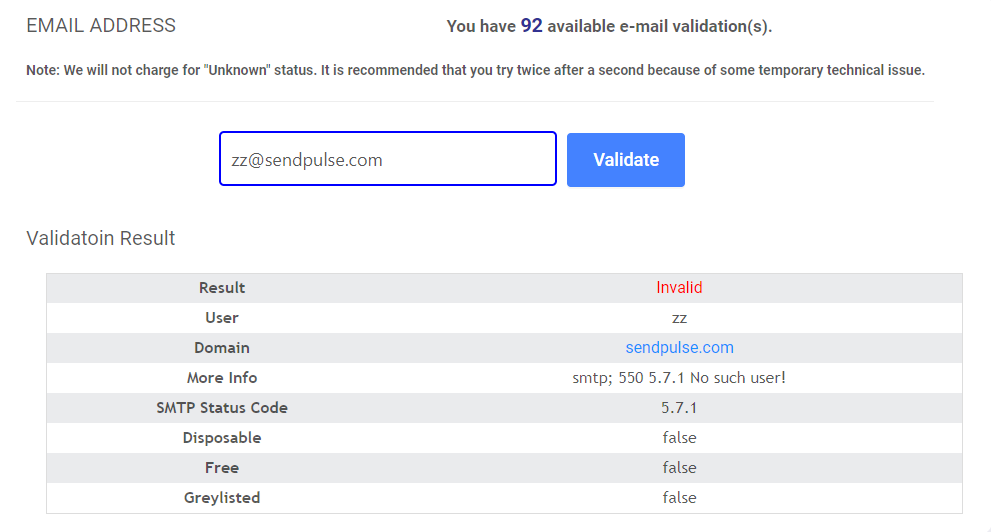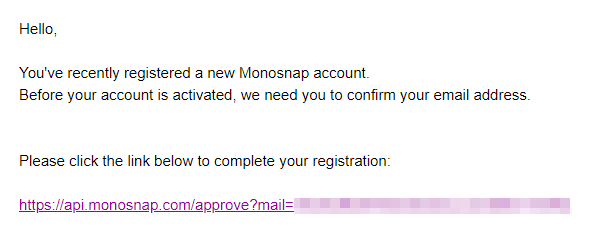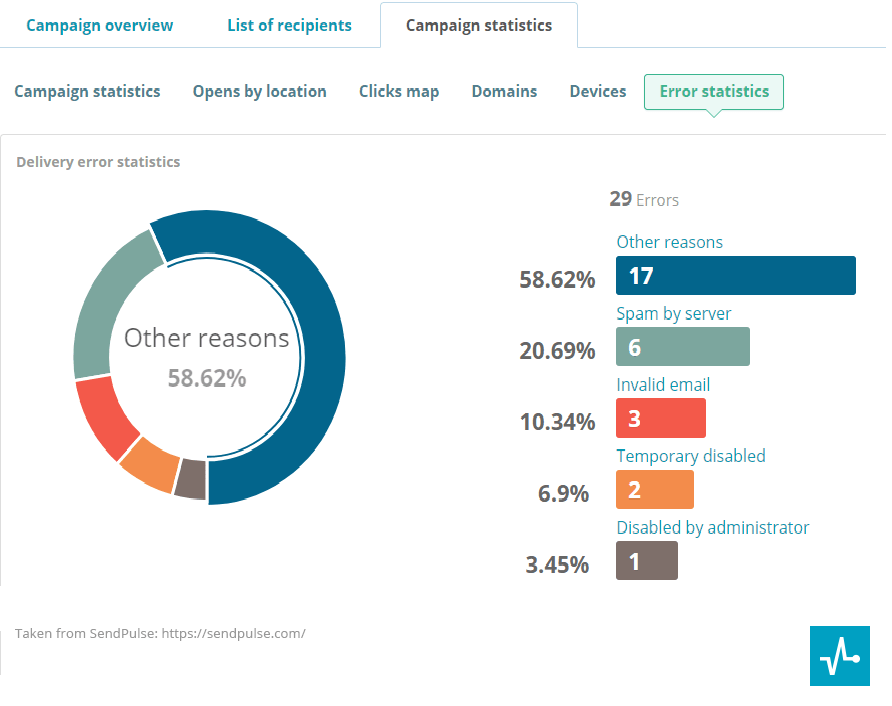Clean mailing list, high deliverability rate and improved sender reputation — these are all benefits you as a sender may get from a highly efficient procedure — mailing list validation. In this article, we’ll take you through the whole process of it, provide a list of email verification tools, and offer three steps to prevent faulty emails from getting into your mailing list. But first, let’s clear up what email validation is.
Email validation defined
Mailing list validation, or verification, refers to checking whether an email address is valid and deliverable without actually sending any test emails. This process contributes to fewer hard and soft bounces, helps to avoid spam traps, and leads to better overall performance of your email campaigns.
Email validation usually encompasses three steps:
- Formatting and syntax check
The primary step consists in verifying the email addresses against recognized email formatting standards and detecting typos and spelling errors in both local (before an @ symbol) and domain (after an @ symbol) parts of an email address: any spaces or invalid characters, missing “at” sign, and so on.
- Domain and server verification
In case of the proper syntax and formatting, the verification goes further checking if the DNS is valid and active, and if the mail exchanger (MX) record exists and can receive emails.
- Mailbox confirmation
The final step serves to verify if the specific mailbox exists and is not full. This is usually done through SMTP protocol. The email verifier tool pings the exact email address with an EHLO or HELO message and waits for the response from the email server. If the latter comes, the email address is valid and active.
Types of email verifiers
There are two types of email verification solutions: software and SaaS. Software is a downloadable tool for email validation that you can install on your computer, while SaaS-based solutions are available online so you can launch them anytime from any device.
Now that we know the difference between the two types of email verifiers, let’s see the benefits and drawbacks of both.
Pricing
Desktop email verifiers are more affordable because you pay only once to get a licensed copy of the program and can use it for scanning unlimited lists of emails. With online-based solutions, users either buy a monthly subscription or pay for the number of verifications or for a specific number of emails they can check per month.
Multiple users
If you choose a desktop verifier, you can access it only from the computer it was installed and configured on. With SaaS-based solutions, however, the situation is completely different: you can log in from any device and access a single account by multiple users. Nevertheless, some online verifiers allow limiting the access for specific IP addresses.
Data security
On one hand, when you are using a desktop app on a single device, your mailing list is stored on your computer, so it is solely under your control. You don’t have to worry much about data leaks, of course, keeping in mind spyware threats, but leaving that to your firewall. On the other hand, if the computer crashes, the database will be lost, so you should always have a backup and make reserve copies stored elsewhere on a regular basis.
Meanwhile, when you verify your mailing lists online, the data is stored in your web account, so no viruses or computer hardware failures can harm it. At the same time, any online service can suffer data leaks or system glitches, so making a reserve copying should be regularly done in this case as well.
IP address safety
In spite of all the merits, the truth is that excessive use of desktop verifiers puts your IP reputation at risk. Email servers may take multiple verification requests for spam attack and return false-positive or false-negative verification statuses. In the worst case scenario, your IP may get blacklisted by anti-spam databases. Of course, there is an option to mask the real IP with a proxy, but again, this involves extra efforts and cost added to each verified email.
1. Snov.io Verifier is an online multi-step tool that checks email addresses for correct syntax and formatting, domain name, and MX record for validity as well as pings each email with a simple technical request to authenticate if it exists on the server. You can verify your mailing lists both by uploading them or using an API solution. Below you can see a detailed email validation report:

2. BriteVerify Email Verifier is another SaaS-based tool that verifies mailing lists in three steps: syntax check, domain validation, and email pinging. It’s a drag-and-drop solution you can use both for a bulk mailing list verification or via API for a real-time check.
3. MyEmailVerifier is an easy-to-use and affordable email verification service. You can use it to check email addresses for syntax errors, domains for validity and then delete invalid or inactive ones from your mailing list. MyEmailVerifier also identifies corporate email addresses and temporarily unavailable addresses and excludes them from receiving emails.

4. Correct.email Verifier is a web-based tool for mailing lists of all sizes, which provides bulk email verification. Here’s how the results of verification looks:

Email validators are tools for fixing errors that have already occurred, but it’s much better to prevent faulty emails from getting into your lists, isn’t it? Here are three simple practices you can stick to to do this.
How to prevent faulty emails from getting into your mailing list
Use double opt-in
Typos usually occur when filling in the web form subscribers accidentally hit a wrong or an extra key. Double opt-in filters incorrect data: first of all, a subscriber enters their email address into the subscription form; secondly, they have to log in to their email account, open the confirmation message and click a registration link to confirm the subscription:

If the subscriber initially keys in a wrong address, they will simply not receive a confirmation email.
Track delivery issues
Make it a habit to check statistics on your email campaigns to address bounces — invalid or non-existent emails. SendPulse, for instance, provides a detailed statistics about delivery errors. Check it out:

Below you can see what each delivery status means:
- “Temporary unavailable” — user’s email server was unavailable or rejected the message.
- “Address doesn’t exist” — the email address doesn’t exist on the specified domain.
- “Spam by server” — recipient’s server rejected to receive the message taking it for spam, or email address is blocked.
- “Mailbox full” — mailbox is already full and can’t receive new messages.
- “Marked spam by user” — user marked an incoming email as spam; such email addresses are automatically added to the list of constantly unavailable emails.
- “Other reasons” — there is no detailed information about them. It can happen because of the incorrect recipient’s mail server settings.
- “Domain name doesn’t exist” — the mentioned domain name doesn’t exist and the delivery to the recipient’s email address is impossible.
Keep an eye on these reports and verify emails to avoid such issues.
Segment and reactivate your subscribers
Divide your subscribers into several segments depending on when they joined your mailing list:
- 1-6 months ago;
- 6-12 months ago;
- more than one year ago.
After that, make up a reactivation schedule. Send a re-engagement campaign to the first group, then try to reactivate the second group, and, finally, mix the subscribers from the third group with those users from the first and second groups who have responded to your reactivation emails.
During the whole re-engagement period, keep tracking the bounce rates. Stop the reactivation as soon as you see that bounces begin rising and clean your mailing list from addresses that cause delivery problems.
Summing up
To keep your mailing list healthy and prevent delivery errors, always keep in mind the following three steps:
- Use double opt-in to make sure you get only correct email addresses on your list.
- Get an email verifier service account and validate mailing lists before sending an email campaign.
- Segment subscribers based on the date they joined your list and try to re-engage them, paying special attention to bounce rates and spam complaints.